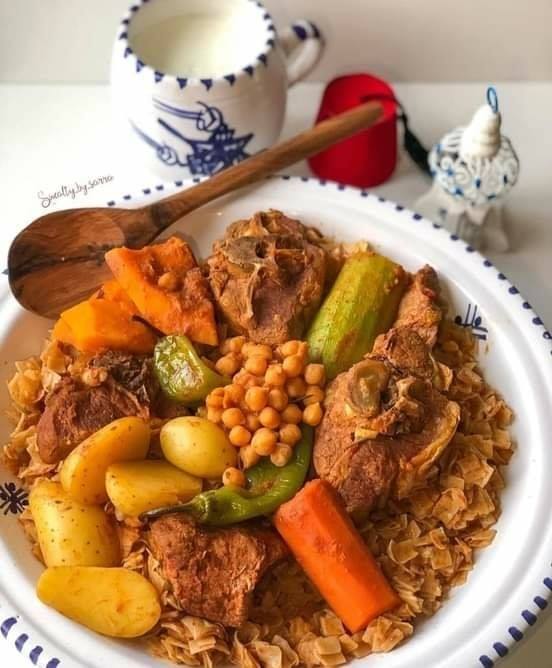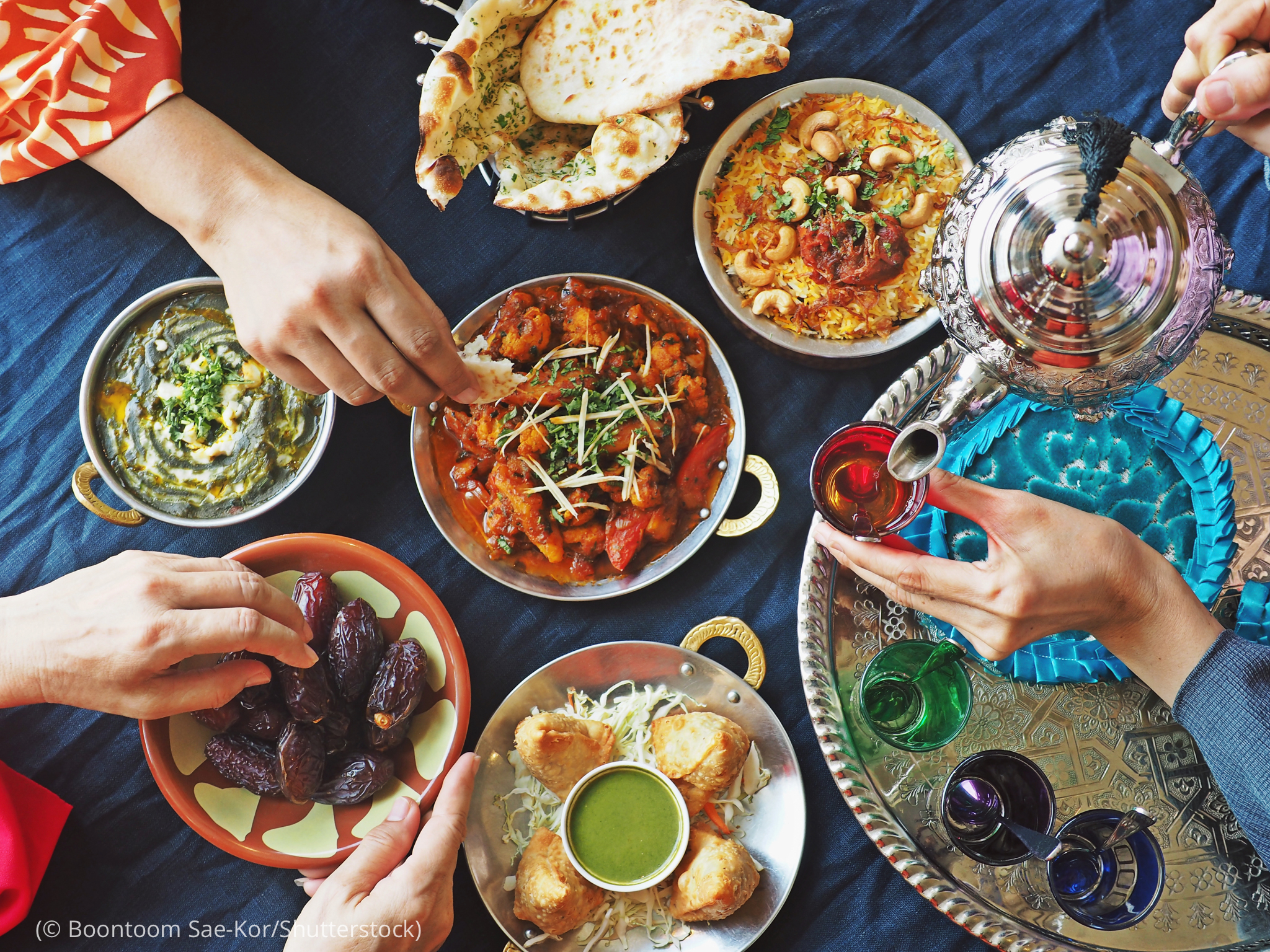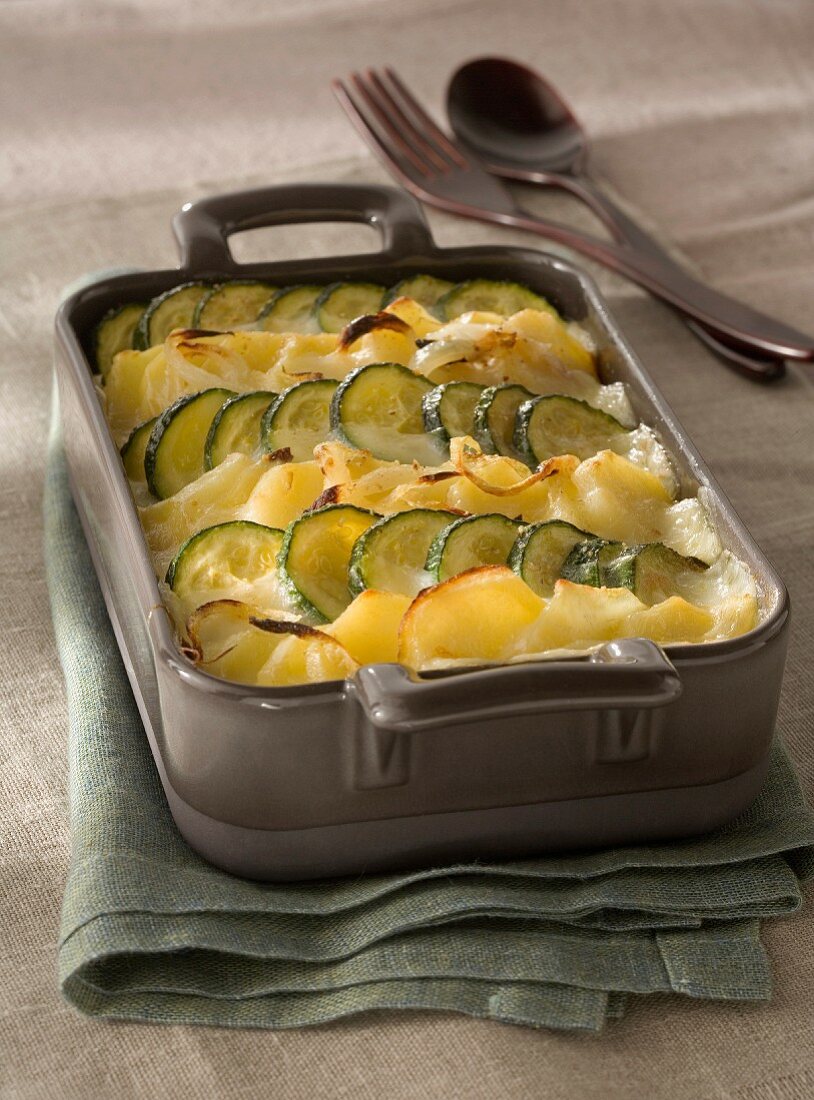Tunisian Nwasser: History and origin of this famous Tunisian dish

Nwasser dough is prepared from fine semolina, flour, water, oil and salt. Roll out the dough into very fine sheets, sprinkling from time to time with the starch. Leave to dry in the sun for an hour then fold and cut into 1*1 cm squares
Its sauce does not differ from that of couscous except that there is not a great variety: either washer with meat, or with chicken or with Osdenne.
The Tunisian dish “Nwasser”, is a dish that dates back to 1199. The versions are different as to the origin of this dish, some say that it dates back to the time of the reign of Caliph Naceur Mouahadi and others postulate that it is a Moresque woman who invented it.
The latter indicated that the Moresques fled the King of Spain in 1608 and 1609 and with them there was this woman who, on arriving in Tunisia, wanted to invent a dish that would bring happiness and fortune. Thus, she had the idea of rolling out a dough and then cutting it into the shape of the currency of the time. To this paste, she added saffron which gave it a golden color giving the appearance of silver coins and gave it the name Nwasser.
Since then this dish has become a popular traditional dish, which is cooked in all Tunisian cuisines.
Tunisian Nwasser
Ingredients
- 1 cup chickpeas
- 1 onion
- 2 tbsp tomato purée
- 3 tablespoons of oil
- ½ tbsp ground chilli
- 1 1/2 cups nwasser square pasta, if you can't find nwasser, you can replace it with canelloni sheets, but you need to cut them into very small squares
- ½ teaspoon ground cinnamon
- 1/2 lb of potatoes
- 1 pinch fine salt to taste
- fresh chillies
- 1 pinch of ground black pepper to taste
- Two eggs optional
Instructions
- Put the chickpeas to soak in fresh water the night before and rinse them.
- Cut the chicken into regular pieces and season with salt and pepper.
- Peel and chop a small onion.
- Clean the potatoes and the fresh peppers and leave them as they are.
- Heat half the oil over high heat in the bottom of a couscous pot, brown the chicken pieces with the minced onion, add the tomato dissolved in a glass of water, the ground pepper and the chickpeas, mix and cook for 8 to 10 minutes.
- Add a liter and a half of water and boil. Then coat the nwasser with the remaining oil, place them in a couscous strainer. Adapt the latter to the pot, seal the joint of the two containers with a strip of damp cloth, lower the heat and cook for 25 to 30 minutes. Then remove the couscous, leave the pot in place and plunge the potatoes and peppers into it.
- Pour the nwasser into a dish, aerate the pasta by separating the slices stuck to each other, coat them with fresh butter or ghee, sprinkle them with cinnamon bark, level and set aside. When the chicken pieces are cooked, remove them with a slotted spoon along with the potatoes and peppers and adjust the salt. Baste the pasta with the broth, place the container in the oven and leave it there until the pasta has absorbed all the liquid. Hard-boil two eggs and cut them into quarters. Peel the potatoes and cut them in the same way.
- Remove the tray from the oven, align the chicken pieces on the pasta, garnish with the peppers, hard-boiled egg wedges and potato pieces and serve immediately.
- Enjoy your nwasser!





